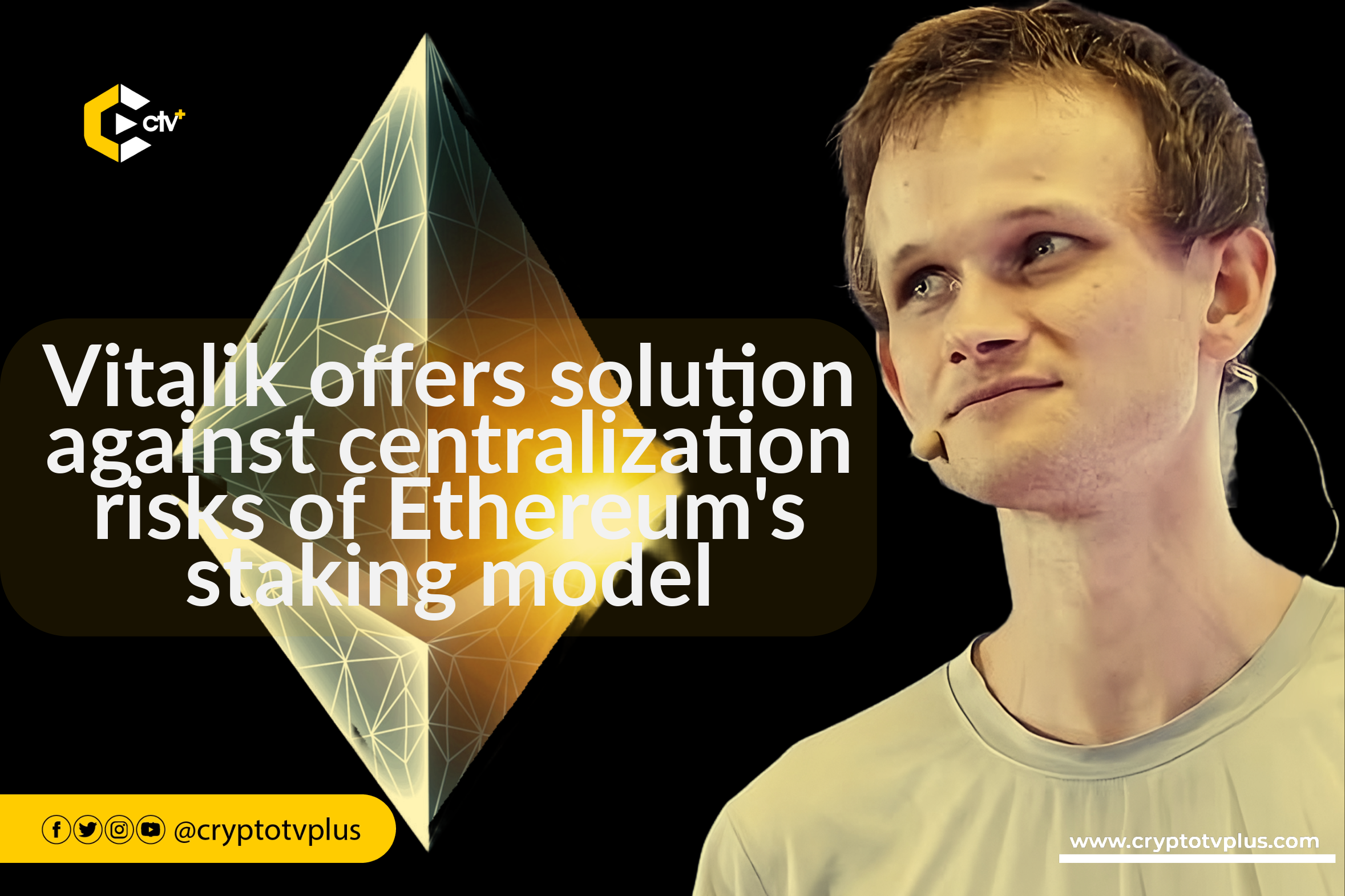News
Vitalik offers solution against centralization risks of Ethereum’s staking model

The Ethereum blockchain’s transition from proof of work to proof of stake in 2022 has sparked mixed reactions. While most chain developers supported the switch, concerns about centralization risks linger among others.
After over a year, co-founder Vitalik Buterin has urged the community to tackle this issue and offered suggestions for potential solutions.
He highlights that Ethereum’s current staking model divides participants into two distinct groups: node operators and delegators, each with their unique roles and responsibilities.
Node operators
These are individuals or entities who actively operate network nodes. In the context of staking, they contribute to the network’s security and consensus by running these nodes.
Node operators typically have to stake a certain amount of cryptocurrency, which could be their capital or another form of collateral.
By doing this, they demonstrate their commitment to the network’s health and security. If they fail to fulfill their duties or act maliciously, they risk losing the staked funds or facing penalties.
Delegators
The second group are Delegators. They are participants who provide some amount of cryptocurrency (in this case, ETH) to the staking system.
Unlike node operators, delegators do not necessarily need to run nodes or actively participate in the network’s operations beyond staking their cryptocurrency.
They have the flexibility to delegate their assets to node operators of their choice. This means they entrust their funds to node operators to participate in staking on their behalf.
Delegators do not have stringent requirements or minimum commitments beyond providing collateral.
The impact
Vitalik noted that the presence of these groups has resulted in two challenges – centralization risk in node operators and needless consensus layer burden.
He went further to explain that the selection process for node operators within existing staking pools may lead to centralization issues.
In staking systems, node operators play an important role in maintaining the network’s operations and security.
However, if the methods used to choose these node operators are not decentralized or have flaws, it can result in a concentration of power among a few operators.
For instance, if a small group of entities or individuals control the majority of node operator positions, it can lead to a situation where they have disproportionate influence over the network’s decisions and potentially harm its decentralization.
This centralization risk highlights the need for more equitable and decentralized mechanisms for selecting node operators within staking pools.
He added that the needless consensus layer burden refers to the excessive computational load placed on the Ethereum network’s consensus layer, particularly due to the verification of a large number of signatures.
Ethereum’s Layer 1 (L1) is responsible for verifying and processing transactions and messages from users and validators.
In the context of staking, these transactions often involve validating signatures provided by stakers (node operators).
He noted that Ethereum L1 is currently verifying approximately 800,000 signatures per epoch (a defined period), and this number may increase significantly with the introduction of single-slot finality.
This high volume of signature verifications places a substantial burden on the network, potentially affecting its scalability and efficiency.
Proposed solutions
Vitalik proposed a two-tiered staking system to resolve the problem mentioned. He made this while reflecting on the unique changes done to DeFi protocols – Rocketpool and Lido.
First, he said there should be a high-complexity slashable tier. This tier involves a smaller number of participants, approximately 10,000, who engage frequently in network activities.
However, they face the risk of slashing penalties if they behave maliciously or fail to fulfill their responsibilities.
He added that there should also be a low-complexity tier where participants engage sporadically and either face minimal or no slashing risk. They play a less active role in the network compared to the high-complexity tier.
To implement these solutions, adjustments to the validator balance cap and the introduction of a balance threshold are necessary.
This approach seeks to balance active and passive participation, boosting network security and decentralization while accommodating varying participant engagement levels.
Furthermore, implementing these changes would empower those with limited resources to participate in staking, allowing them to select nodes and engage in consensus more effortlessly while still contributing effectively. This shift would enhance decentralization and participation.
Additionally, it aims to significantly reduce the number of signatures processed by Ethereum’s consensus layer per slot, potentially down to 10,000, which enhances decentralization and facilitates more people running validating nodes.
Read also; Ethereum Developers debate Devnet-10 timing amidst Cancun/Deneb testing
























